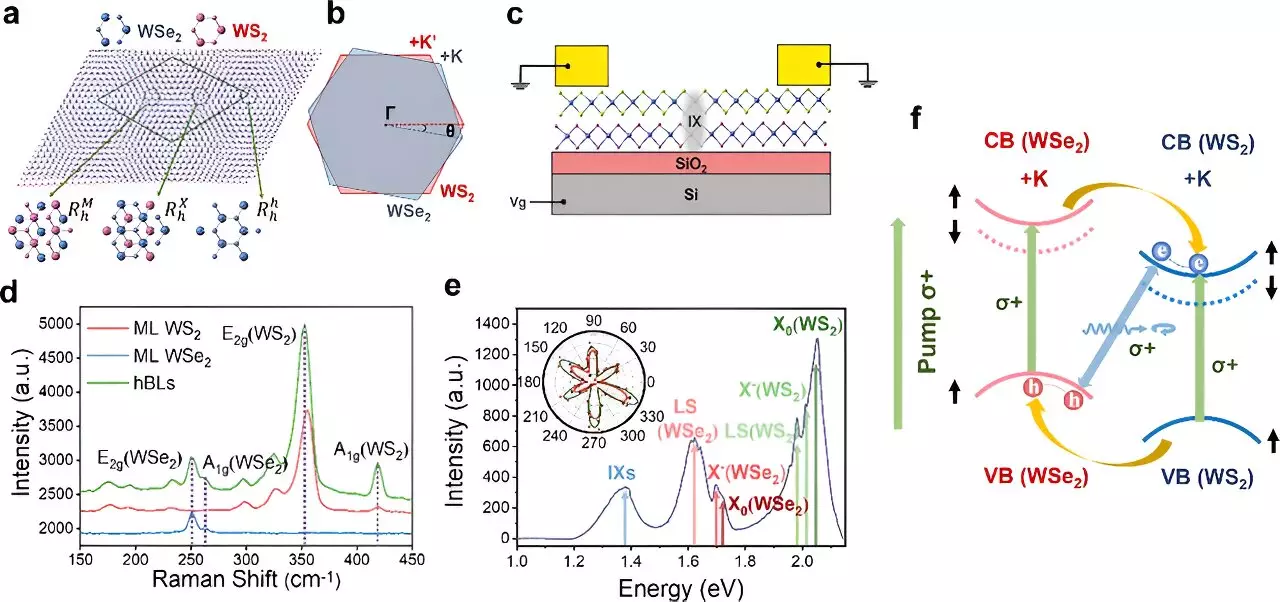In a recent study published in Science Advances, researchers explored the impact of twist engineering on valley polarization in electrically controlled transition metal dichalcogenide heterobilayers (hBLs). This groundbreaking research sheds light on the potential for manipulating valley degrees of freedom in such systems, highlighting the importance of moiré patterns and twist angles in controlling excitonic potential and polarization properties.
One key finding of the study was the demonstration that the valley polarization of interlayer excitons (IXs) can be effectively altered by adjusting the twist angle in hBL devices. By varying the moiré period through twist engineering, researchers were able to control both the degree of circular polarization (DCP) and the polarization switching in WSe2/WS2 heterostructures. This highlights the crucial role of twist angles in determining the valley properties of these materials.
Through experimental investigations, the researchers uncovered the underlying physical mechanisms behind the twist angle dependence of DCP in hBL devices. They observed that a larger moiré period, corresponding to a lower interlayer excitonic potential at local minima, led to enhanced DCP by confining more excitons. Additionally, increased intralayer electron-hole exchange interactions at larger twist angles resulted in a decrease in the intralayer valley lifetime, ultimately reducing interlayer valley polarization.
The study also utilized theoretical calculations based on first-principle theory to further explore the relationship between twist angle and excitonic potential in hBL devices. These calculations revealed that the difference in excitonic potential between two minima increased with the twist angle, necessitating a higher external bias for devices with larger twist angles to switch the polarization. This theoretical framework provided valuable insights into the underlying mechanisms driving polarization switching in these systems.
Building upon their findings, the researchers also showcased the potential for valley-addressable encoding devices in hBL systems. By leveraging the twist angle-dependent polarization switching, they demonstrated a platform for future non-volatile memories, emphasizing the practical applications of controlling valley polarization in transition metal dichalcogenide heterobilayers.
Overall, this study represents a significant step forward in our understanding of the interplay between twist engineering, moiré patterns, and valley polarization in hBL systems. By elucidating the mechanisms governing excitonic potential and polarization properties, the researchers have opened up new possibilities for the development of advanced optoelectronic devices based on these materials.


Leave a Reply